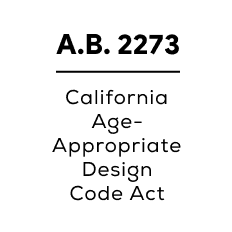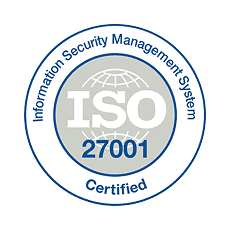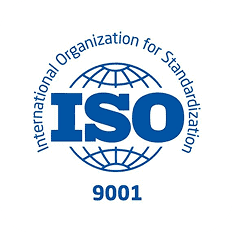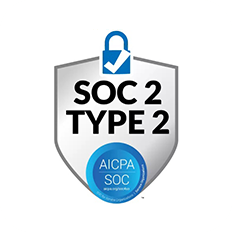Introduction
PrivateID is built for seamless, interoperable identity authentication with complete privacy at its core. Its edge-based architecture and patented tokenization ensure biometric data never leaves the device, enabling scalable, compliant, and frictionless authentication across industries.
SenseTime offers face recognition and identity-verification products (e.g., SenseID) across finance, telecom, access control, and public-security scenarios. SenseID is delivered as “Cloud + Client,” combining SDKs, cloud endpoints, and dedicated terminals, and includes liveness detection and ID document checks.
1. Architecture
PrivateID: Performs 1:1 biometric matching directly at the device edge. Biometric data and PII remain securely on the device, preserving privacy while eliminating data breach risks and simplifying global compliance.
SenseTime: Cloud-first with optional on-device/client SDK components. Products such as SenseID typically send captured media or features to SenseTime cloud (or private cloud) services; person enrollment/verification workflows and liveness checks are orchestrated through these services.
2. Privacy & Tokenization
PrivateID: Uses patented Homomorphic Tokenization, transforming biometrics into irreversible, anonymized tokens. Tokens are unique, cannot be reverse-engineered, and are IEEE 2410 compliant and therefore do not incur global biometric privacy law obligations under GDPR, CCPA, BIPA and HIPAA. No biometric images or templates are transmitted.
SenseTime: Provides identity-verification and liveness functions as part of a cloud–client stack; images/videos (or derivatives) are processed by SenseTime services. Customers are responsible for legal compliance and data governance in their deployments. (SenseTime’s materials position SenseID for regulated sectors but do not claim tokenized, non-reversible templates by default.)
3. 1:1 vs 1:N Matching
PrivateID: Uses patented homomorphic tokenization to transform biometrics into irreversible, guaranteed unique, fully anonymized tokens for 1:N while performing 1:1 at the edge.
•1:1: Edge-based, no network transmission.
•1:N: Only anonymized tokens are transmitted; enables bandwidth-light (~1 KB/token) constant-time lookups (~5 ms) regardless of gallery size.
SenseTime: Supports 1:1 verification (face-to-face compare) and 1:N identification against galleries managed in the service. Server-side APIs handle liveness and matching; candidates are returned with confidence scores for application-side decisions.
4. Multi-Modal Biometrics
PrivateID: Supports facial, voice, image of palm, and fingerprint biometrics that can be combined with Passkeys and additional identity signals (geolocation, Wi-Fi sniffing, device fingerprinting).
SenseTime: Portfolio centers on face recognition and liveness within identity and access scenarios; other modalities would require separate solutions.
5. Liveness Detection (PAD)
PrivateID: On-device, advanced anti-spoofing against photos, masks, and deepfakes without transmitting data.
SenseTime: Offers silent liveness detection that analyzes short video sequences for server-side anti-spoof decisions; SDKs and cloud/private-cloud endpoints are documented for integrations.
6. Scalability & Efficiency
PrivateID: Unlimited scalability with consistent performance. A 5 MB image is reduced to ~1 KB token. Constant performance regardless of gallery size.
SenseTime: Scale depends on the size of person galleries and the capacity of the deployed cloud/private-cloud infrastructure. SenseTime provides SDKs, APIs, and terminals to help manage enrollment, training, and liveness workflows.
7. Accuracy
PrivateID: Delivers 99.999% accuracy across unlimited gallery sizes. (NIST FRVT leader)
SenseTime: Known for competitive recognition and widely deployed across access control and smart-city scenarios; accuracy depends on image quality, environmental conditions, and gallery/training quality. (NIST FRVT publishes vendor-by-algorithm results for verification/identification generally.)
8. Compliance & Security
PrivateID: Processing is performed at the edge (1:1) or through patented Homomorphic Tokenization (1:N) and does not incur global privacy obligations under GDPR, CCPA, HIPAA, and BIPA (annually certified to IEEE 2410).
No biometric data is stored or transmitted.
SenseTime: Customers must ensure lawful use and compliance. Note that SenseTime entities have appeared on U.S. regulatory lists (Commerce Entity List in 2019; Treasury NS-CMIC investment restrictions in 2021). SenseTime has publicly disputed these actions. Organizations subject to U.S. controls should evaluate applicable restrictions and risk.
9. Deployment & Integration
PrivateID: Lightweight SDK/API for rapid integration across IAM, healthcare, retail, and finance. Software-only; runs on general-purpose hardware (desktop, mobile, POS).
SenseTime: Provides SDKs (Android/iOS) and cloud/private-cloud APIs; also offers specialized terminals (e.g., access control, kiosks). Typical integrations provision SenseID services, capture flows, and liveness/video submissions to API endpoints.
10. Ethics & Trust
PrivateID: Purpose-built for user-consented, privacy-preserving identity verification.
SenseTime: High adoption in public-security and surveillance-adjacent use cases has raised global scrutiny. Enterprises should assess ethical guidelines and regional regulatory expectations.
11. Cost & Total Cost of Ownership (TCO)
PrivateID: Edge processing and tokenization reduce bandwidth, compute, and storage costs by orders of magnitude; minimal infrastructure.
SenseTime: Consumption and infrastructure costs vary by deployment (cloud vs. private cloud), liveness video processing, storage, and gallery size. Terminals introduce hardware CAPEX where used.
12. Latency & User Experience
PrivateID: Consistent ~100 ms processing ensures real-time authentication without user delays, even at massive scale.
SenseTime: End-to-end latency depends on capture (often short videos for liveness), network uplink, and server processing. Private cloud can reduce round-trip times compared to public cloud.
13. Deployment Flexibility
PrivateID: Operates fully at the edge for 1:1 and hybrid edge-to-server for 1:N with tokenization. No vendor lock-in; works across any environment (cloud, on-prem, hybrid).
SenseTime: Offers cloud and private-cloud options plus client SDKs and terminals, but matching and liveness typically involve server-side processing.
14. Ecosystem & Interoperability
PrivateID: Easily integrates with IAM, MFA, Passkeys, and risk-based authentication systems. Standards-based (IEEE 2410, FIDO2) interoperability supports enterprise and consumer use cases.
SenseTime: Integrates via SDKs/APIs into eKYC, access control, fintech onboarding, and telecom SIM registration flows; broader IAM and passkey support are implemented at the application layer.
15. Bias & Fairness
PrivateID: Tokenization eliminates demographic markers from biometric data, reducing the risk of bias and improving fairness across populations.
SenseTime: Public documentation focuses on capabilities and deployment scenarios rather than demographic-neutral tokenization; customers should evaluate dataset composition, fairness testing, and regional governance
requirements.
16. Business & Market Positioning
PrivateID: Positioned for enterprises, healthcare, finance, and retail requiring privacy-first, compliant, and scalable biometric solutions.
SenseTime: Broad portfolio across consumer, enterprise, and public-sector use cases; historically strong in smart-city/public-security and commercial access/IDV. The company has also pivoted resources toward generative-AI platforms while continuing to offer face-recognition solutions.
Summary
PrivateID provides a privacy-first biometric platform that performs 1:1 matching at the device edge and leverages patented homomorphic tokenization for 1:N searches. This design ensures biometric data never leaves the device, delivers constant-time performance and multi-modal authentication, while inherently meeting global compliance standards and reducing infrastructure costs.
SenseTime provides face-recognition and identity-verification products, delivered through a cloud–client architecture with server-side liveness and gallery matching. While powerful and widely deployed, the cloud-centric model introduces different privacy/compliance and infrastructure considerations; in addition, U.S. regulatory actions affecting some SenseTime entities may be relevant to multinational buyers.














